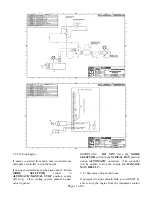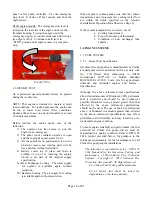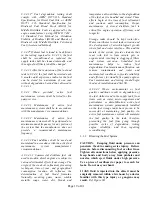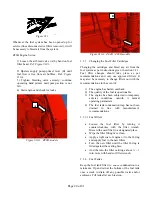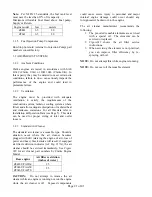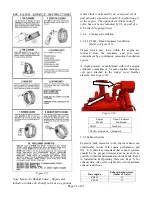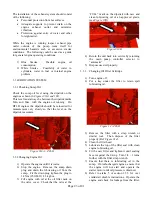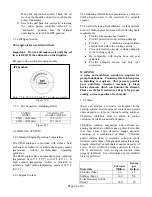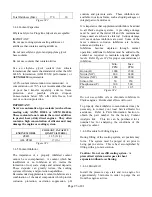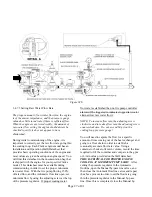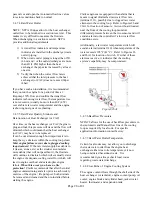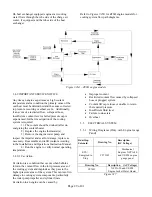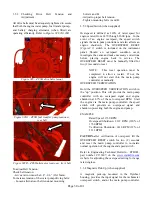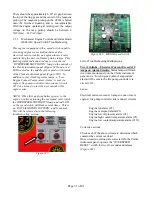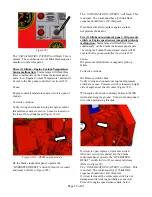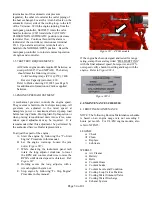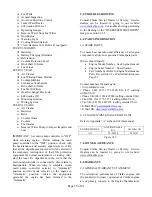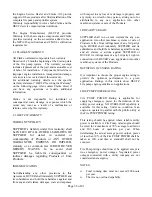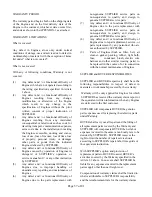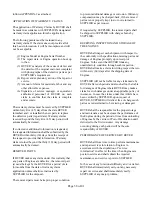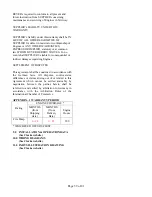
Page 25 of 41
Total Hardness (Max.)
170
10
Figure #22
3.4.4 Coolant Capacities
Ethylene Glycol or Propylene Glycol are acceptable:
IMPORTANT:
Do not use cooling system sealing additives or
antifreeze that contains sealing additives.
Do not mix ethylene glycol and propylene glycol
base coolants.
Do not use coolants that contain nitrites.
Use an ethylene glycol coolant (low silicate
formulation) that meets the standard of either the GM
6038-N formulation (GM1899-M performance) or
ASTM D6210
requirements.
A 50% coolant water solution is recommended. A
concentration over 70% is not recommended because
of poor heat transfer capability, adverse freeze
protection and possible silicate dropout.
Concentrations below 30% offer little freeze, boil
over or corrosion protection.
IMPORTANT
Never use automotive-type coolants (such as those
meeting only ASTM D3306 or ASTM D4656).
These coolants do not contain the correct additives
to protect heavy-duty diesel engines. They often
contain a high concentration of silicates and may
damage the engine or cooling system.
ENGINE MODEL
COOLANT CAPACITY
QUARTS (LITERS)
ZE4H 12.5
(11.8)
ALL ZF6H
17 (16)
Figure #23
3.4.5 Coolant Inhibitor
The importance of a properly inhibited coolant
cannot be over-emphasized. A coolant which has
insufficient or no inhibitors at all, invites the
formation of rust, scale, sludge and mineral deposits.
These deposits can greatly reduce the cooling
systems efficiency and protection capabilities.
Recommended supplemental coolant inhibitors are a
combination of chemical compounds which provide
corrosion protection, cavitation suppression, pH
controls and prevents scale. These inhibitors are
available in various forms, such as liquid packages or
integral parts of anti-freeze.
It is imperative that supplemental inhibitors be added
to all Clarke engine systems. A pre-charge dosage
must be used at the initial fill and the maintenance
dosage used at each service interval. Serious damage
will occur unless inhibitors are used. Some of the
more common corrosion inhibitors are borates,
nitrates and silicates.
Inhibitors become depleted through normal
operation; additional inhibitors must be added to the
coolant as required to maintain original strength
levels. Refer
Figure #24
for proper concentrations of
inhibitors.
Min.
PPM
Max
PPM
Boron (B)
1000
1500
Nitrite (NO
2
)
800 2400
Nitrates (NO
3
)
1000 2000
Silicon (Si)
50
250
Phosphorous (P)
300
500
PH
8.5 10.5
Figure #24
Do not use soluble oils or chromate inhibitors in
Clarke engines. Detrimental effects will occur.
To properly check inhibitor concentrations it may be
necessary to contact your local Service/Dealer for
assistance. Refer to Parts Information Section to
obtain the part number for the factory Coolant
Analysis Kit. This kit can be purchased for a
nominal fee for analyzing the conditions of the
engine’s coolant.
3.4.6 Procedure for Filling Engine
During filling of the cooling system, air pockets may
form. The system must be purged of air prior to
being put in service. This is best accomplished by
filling with a pre-mix solution.
Caution: Do not overfill cooling system. A
pressurized system needs space for heat
expansion without overflowing.
3.4.6.1 Partial Fill
Install the pressure cap, start and run engine for
approximately 5 minutes in order to purge the air
from the engine cavities.







